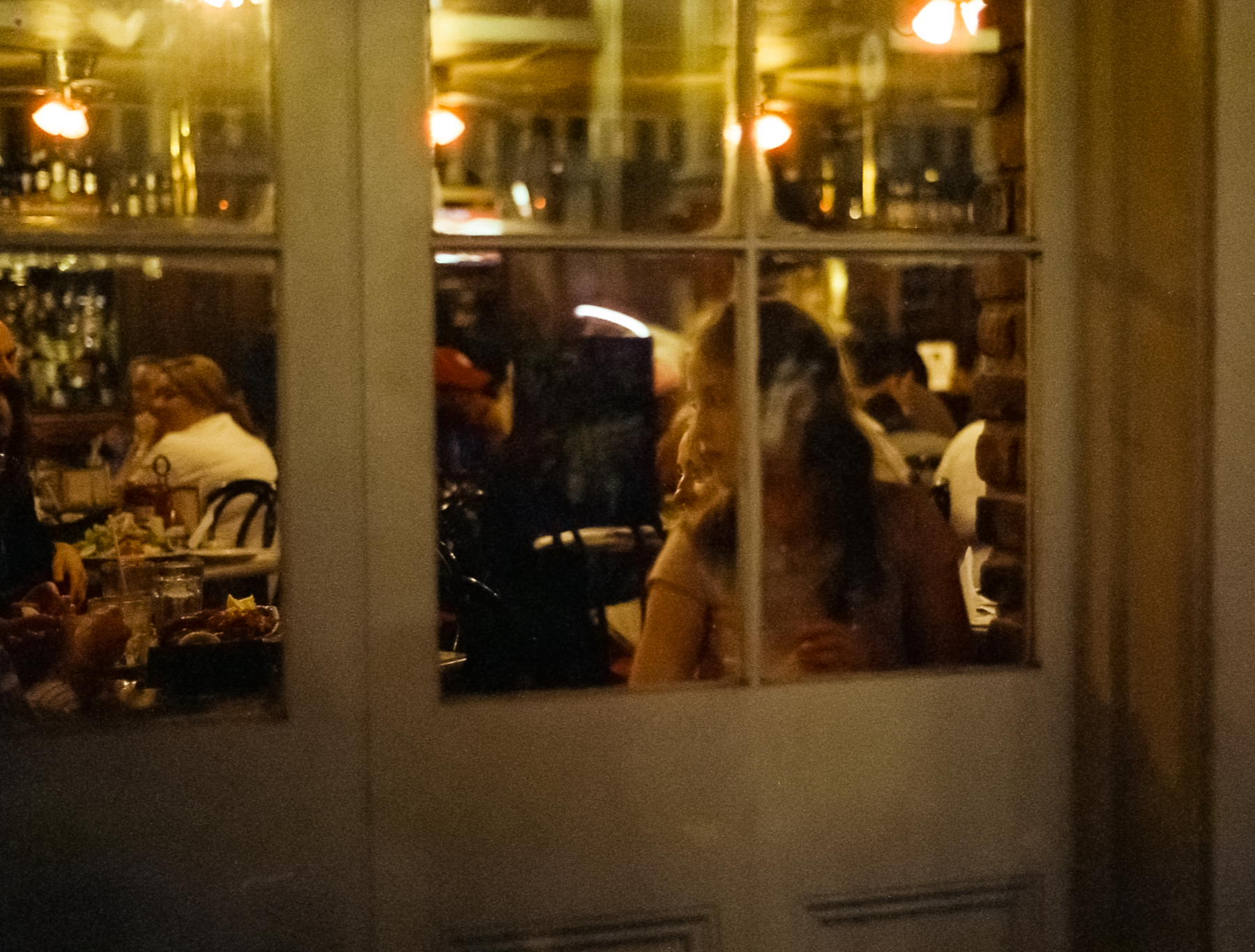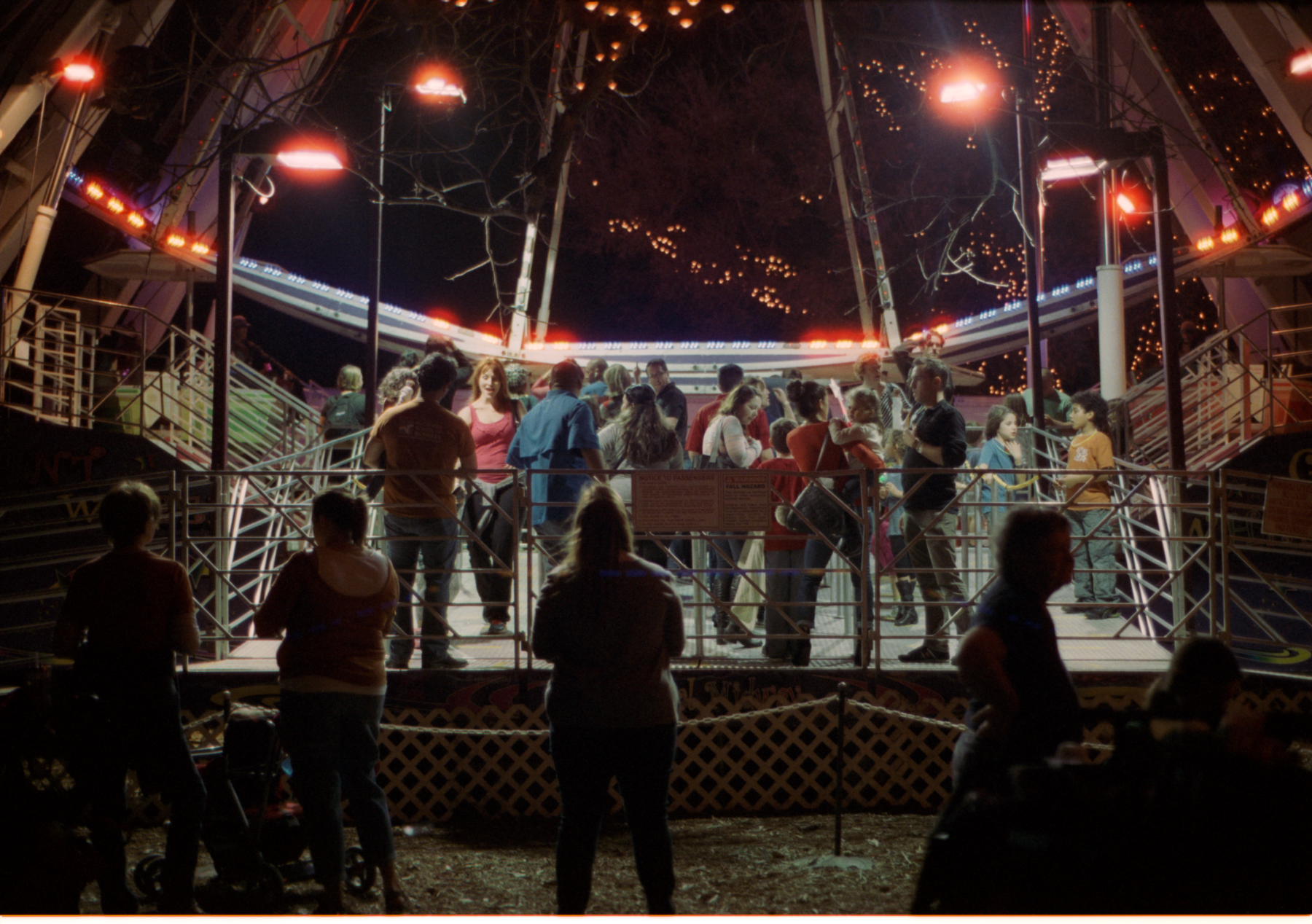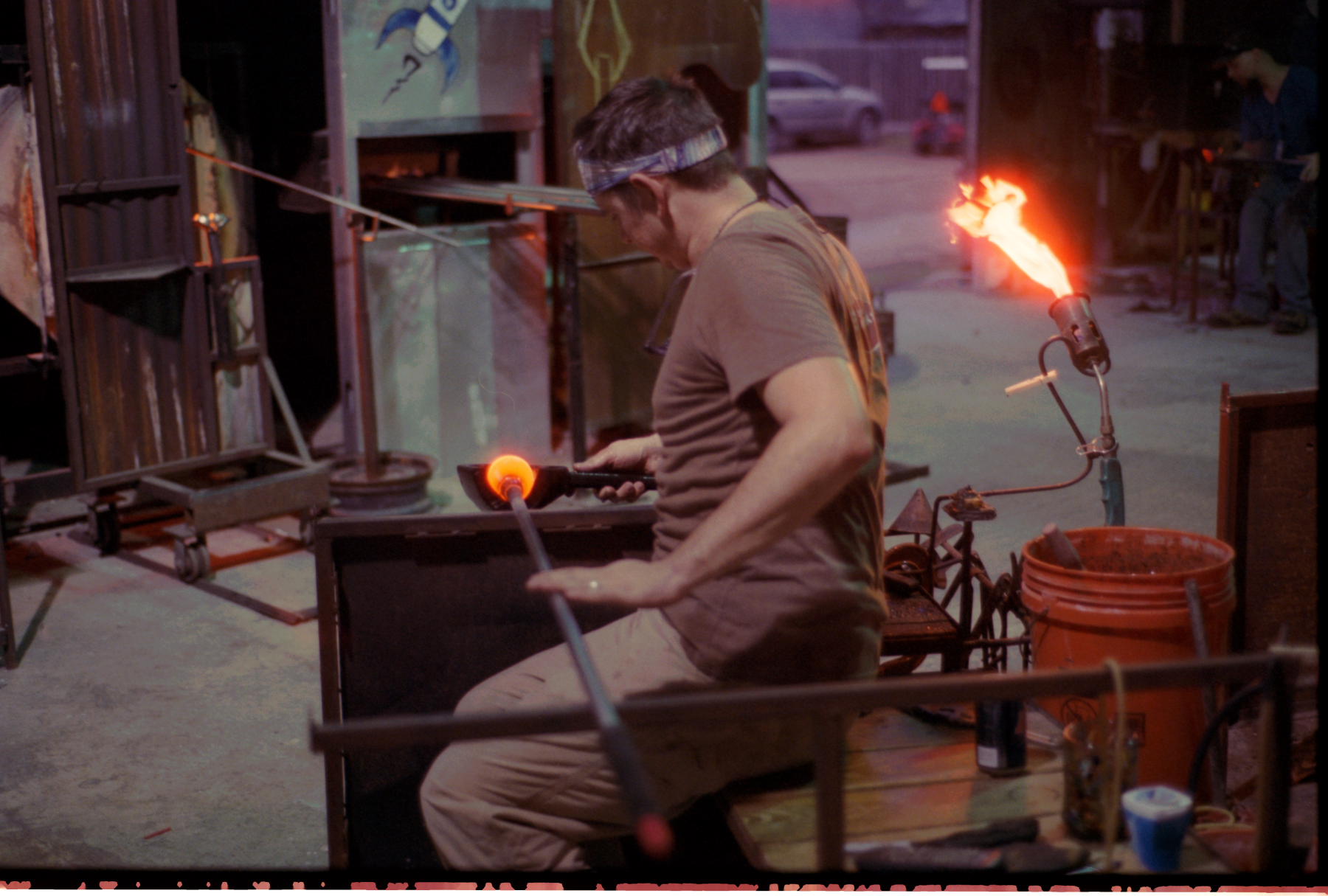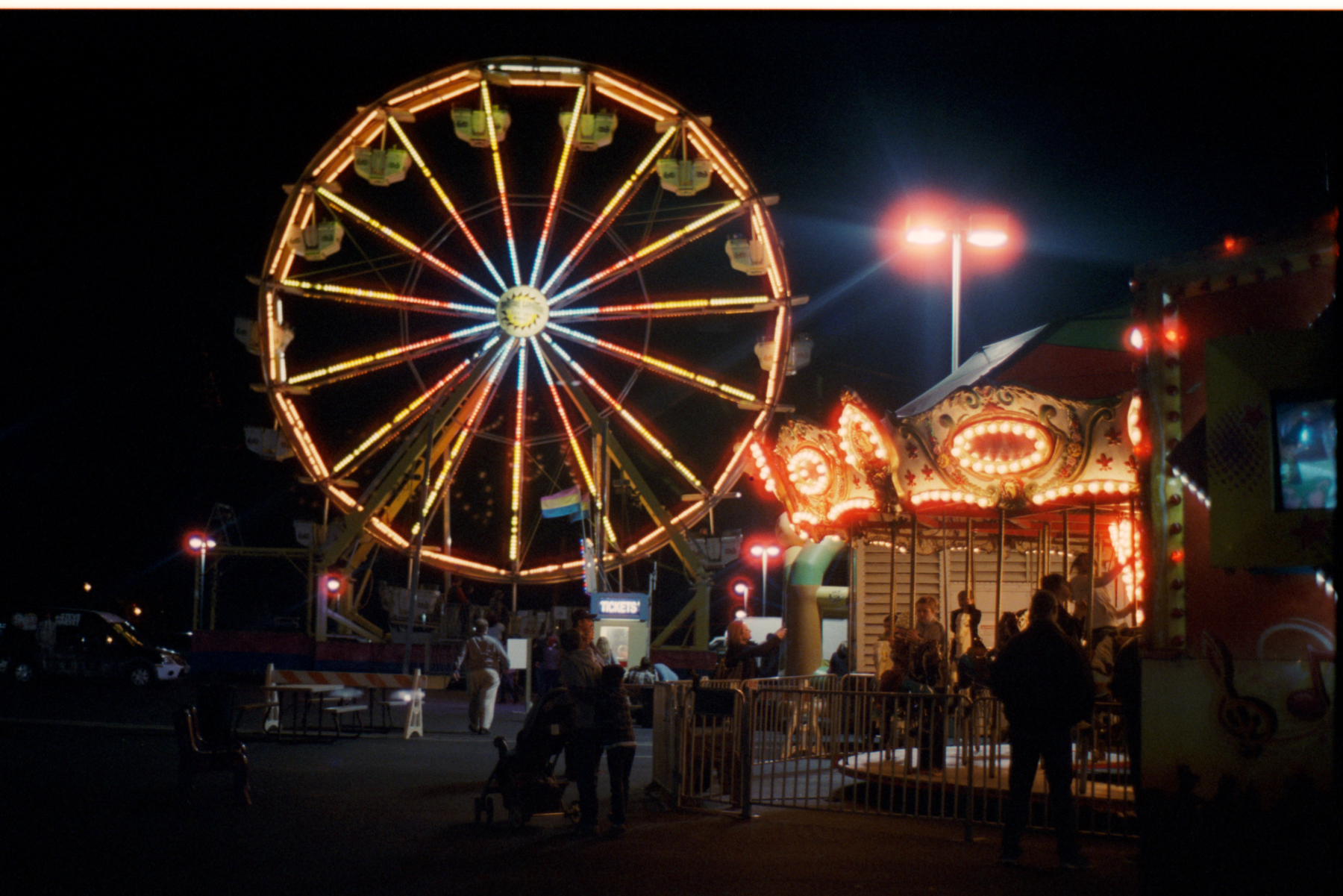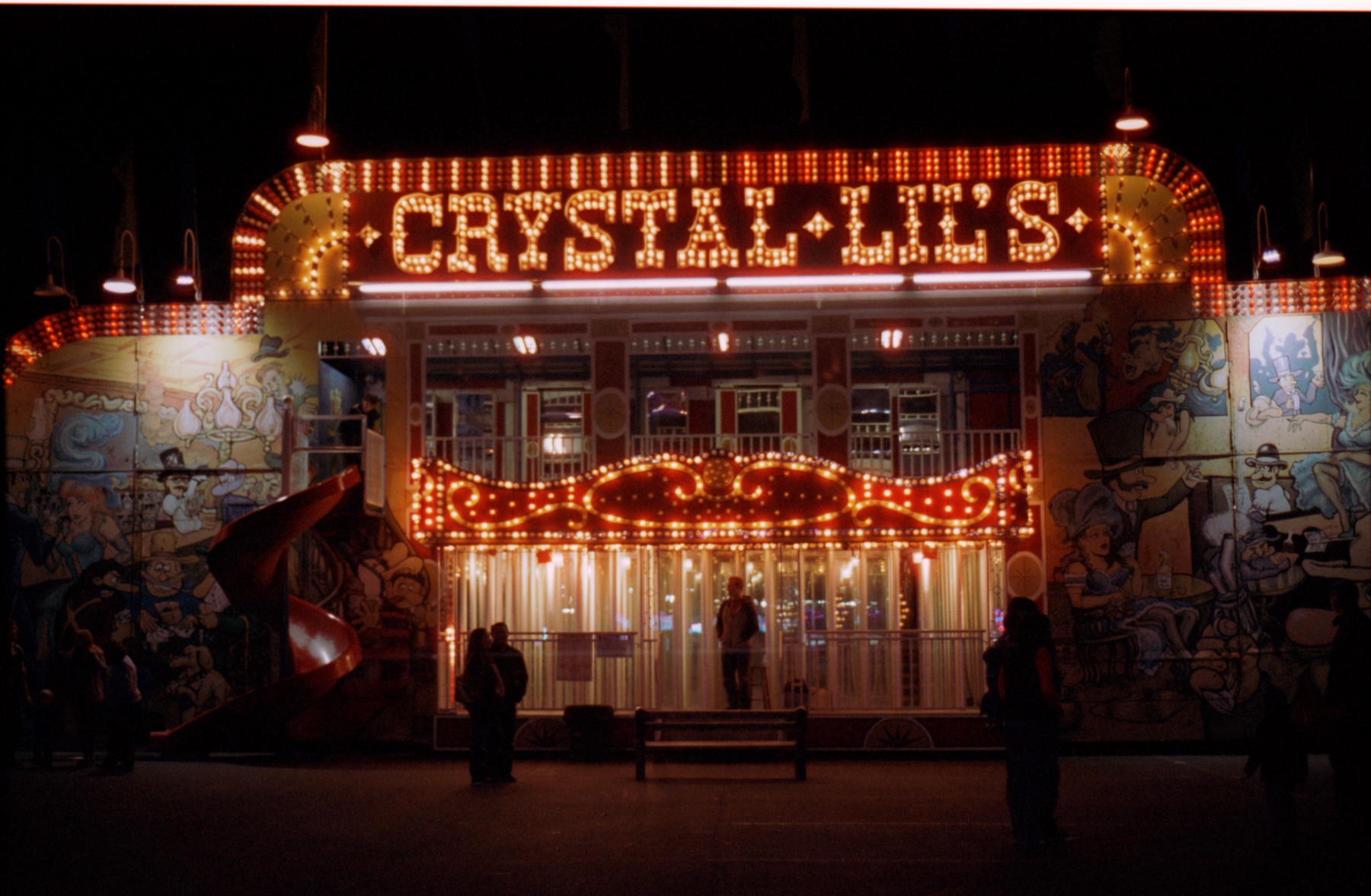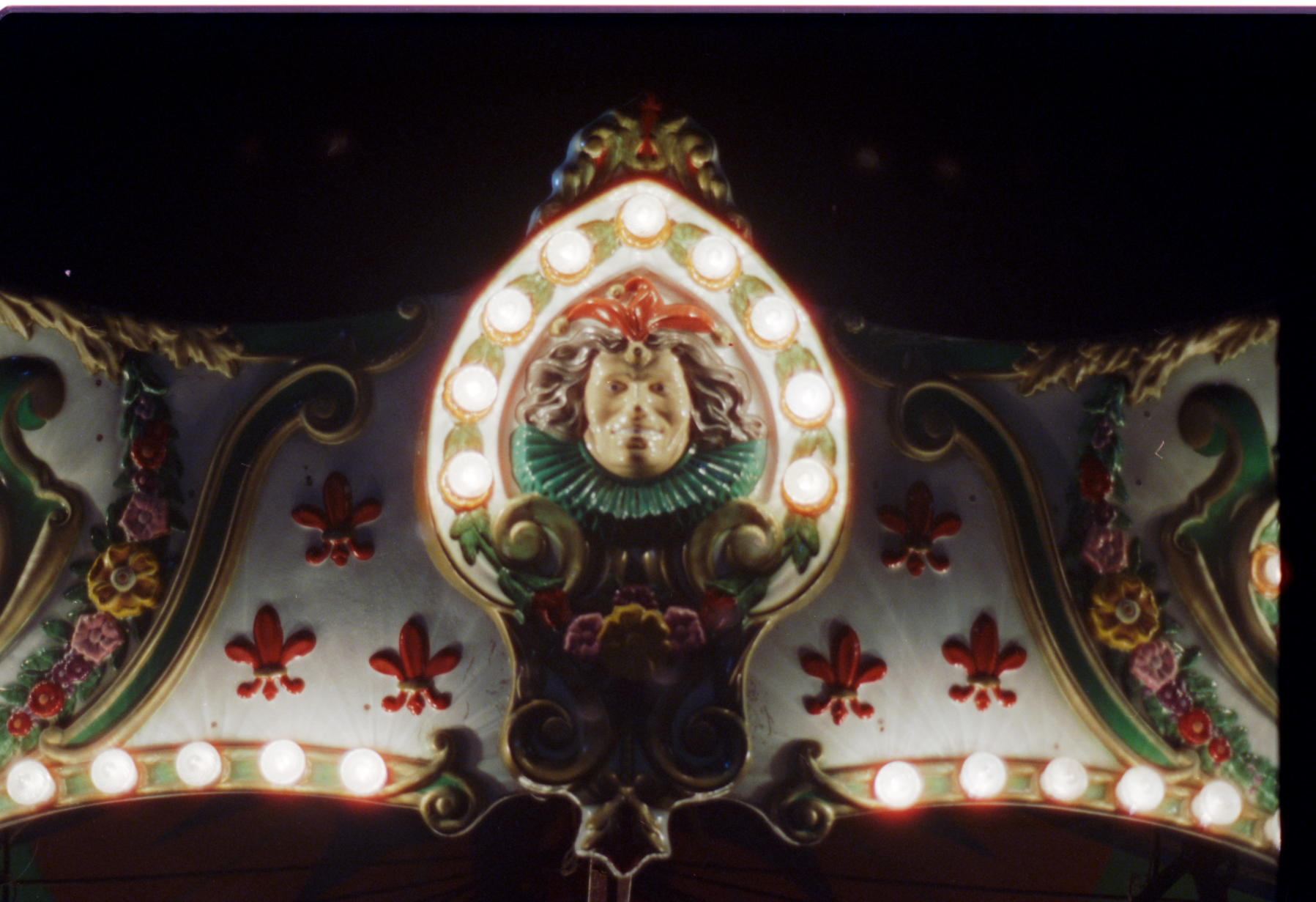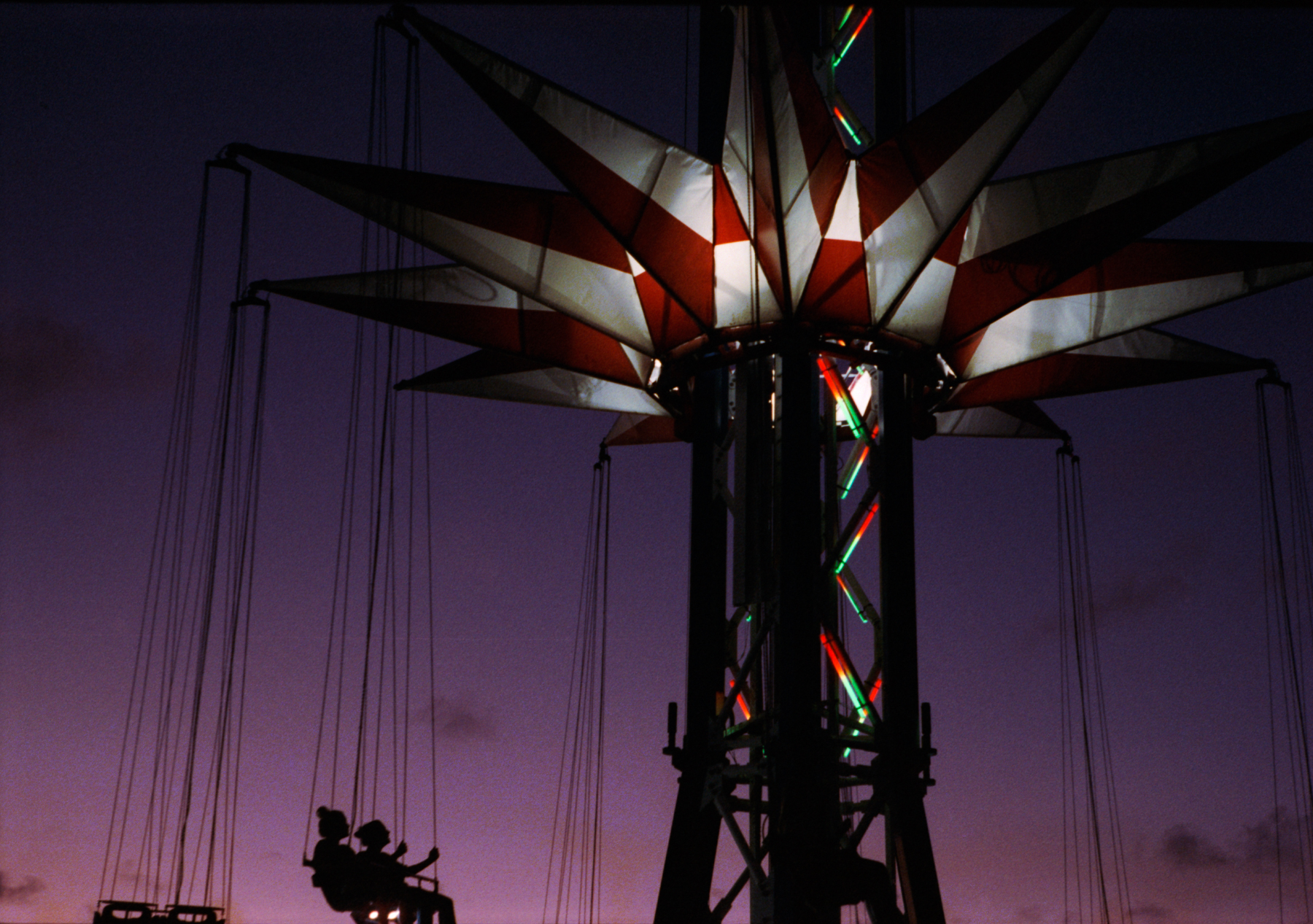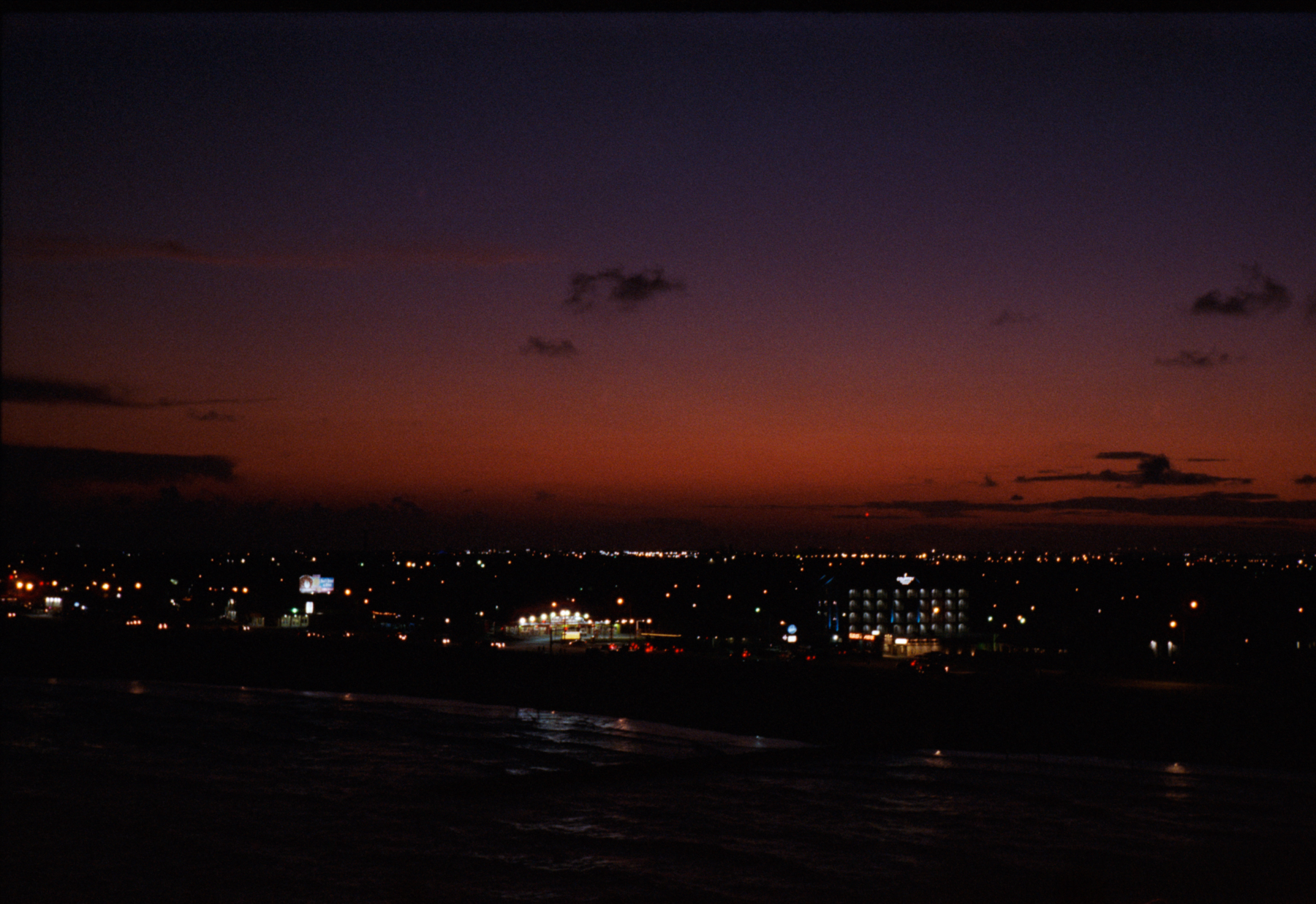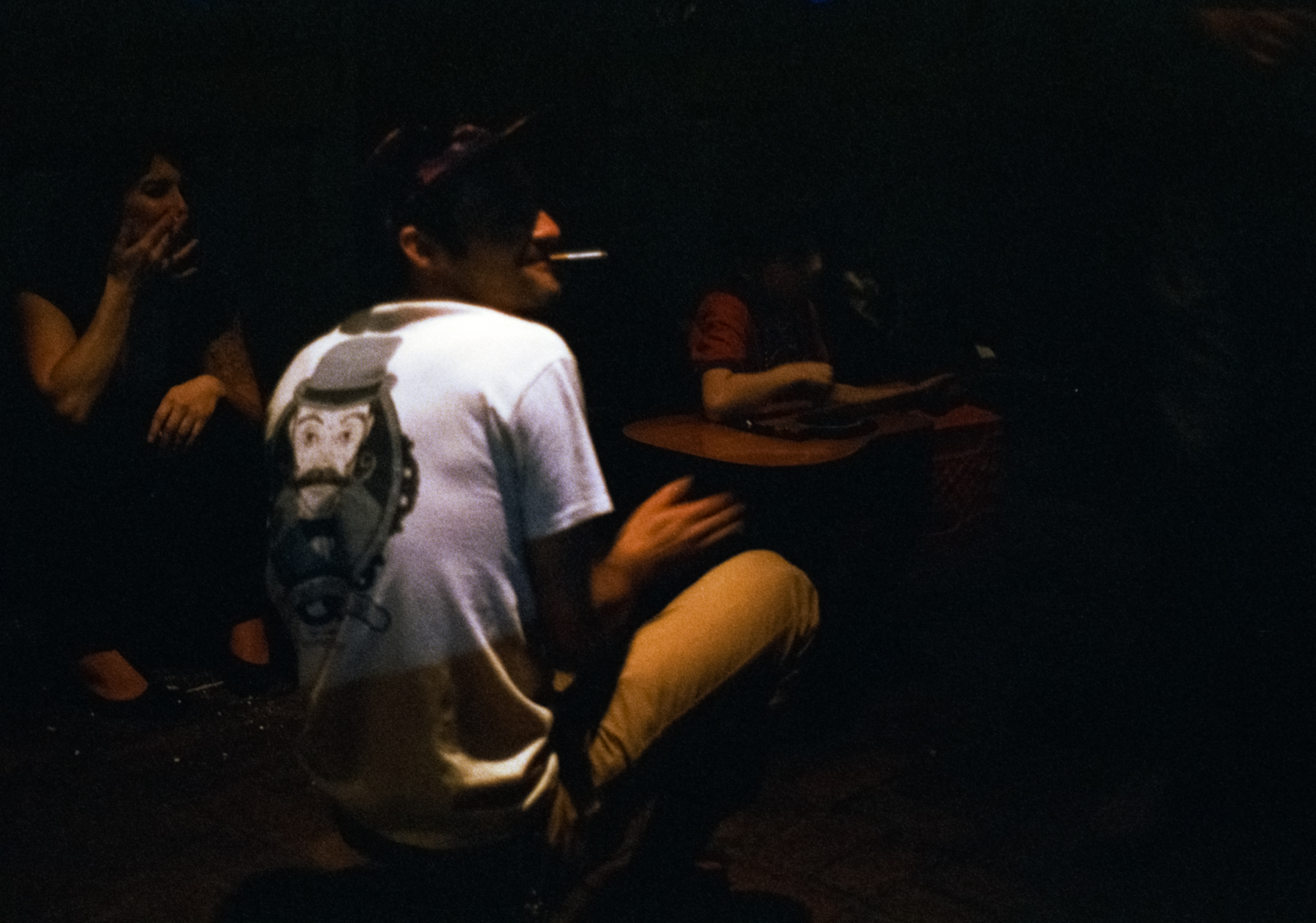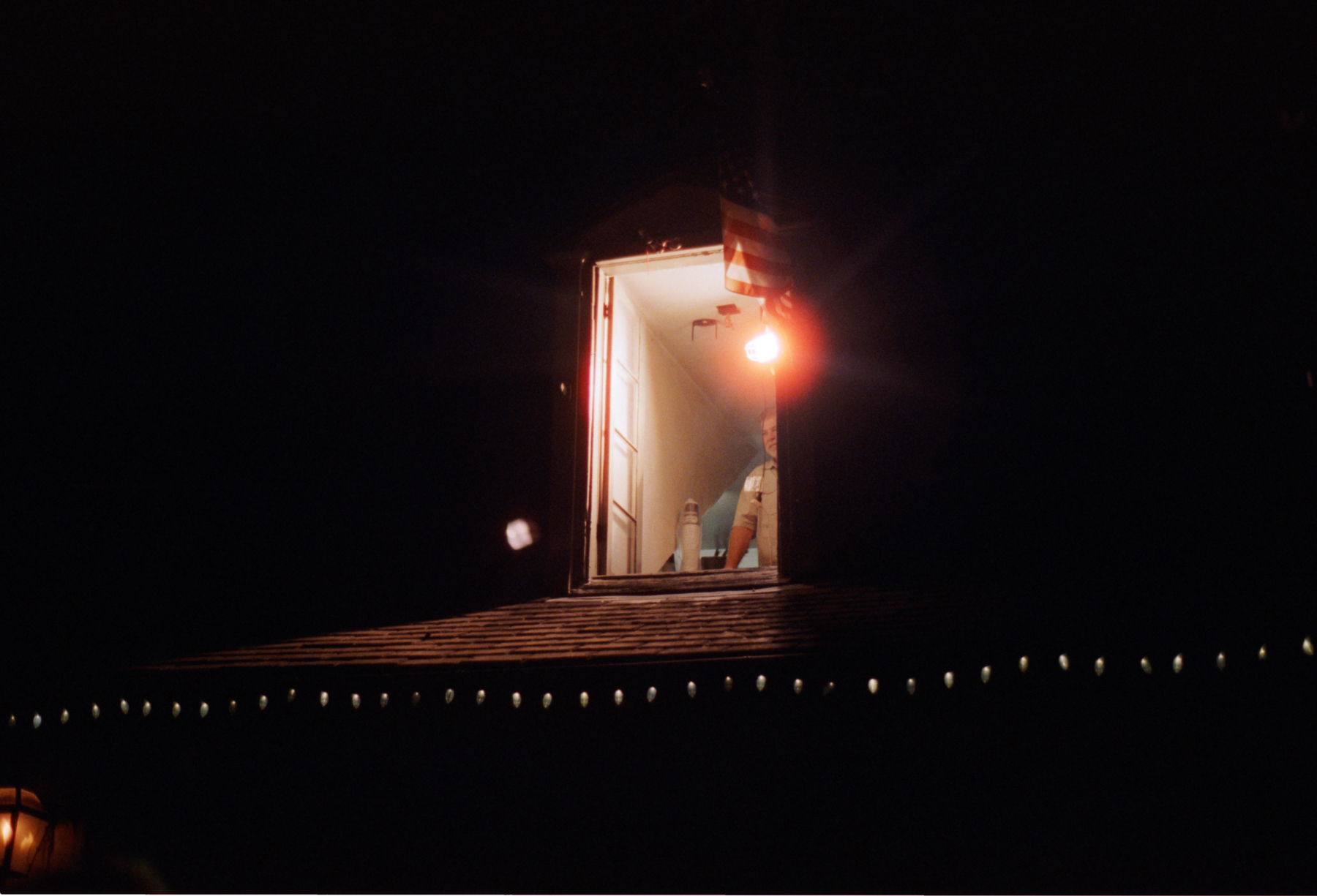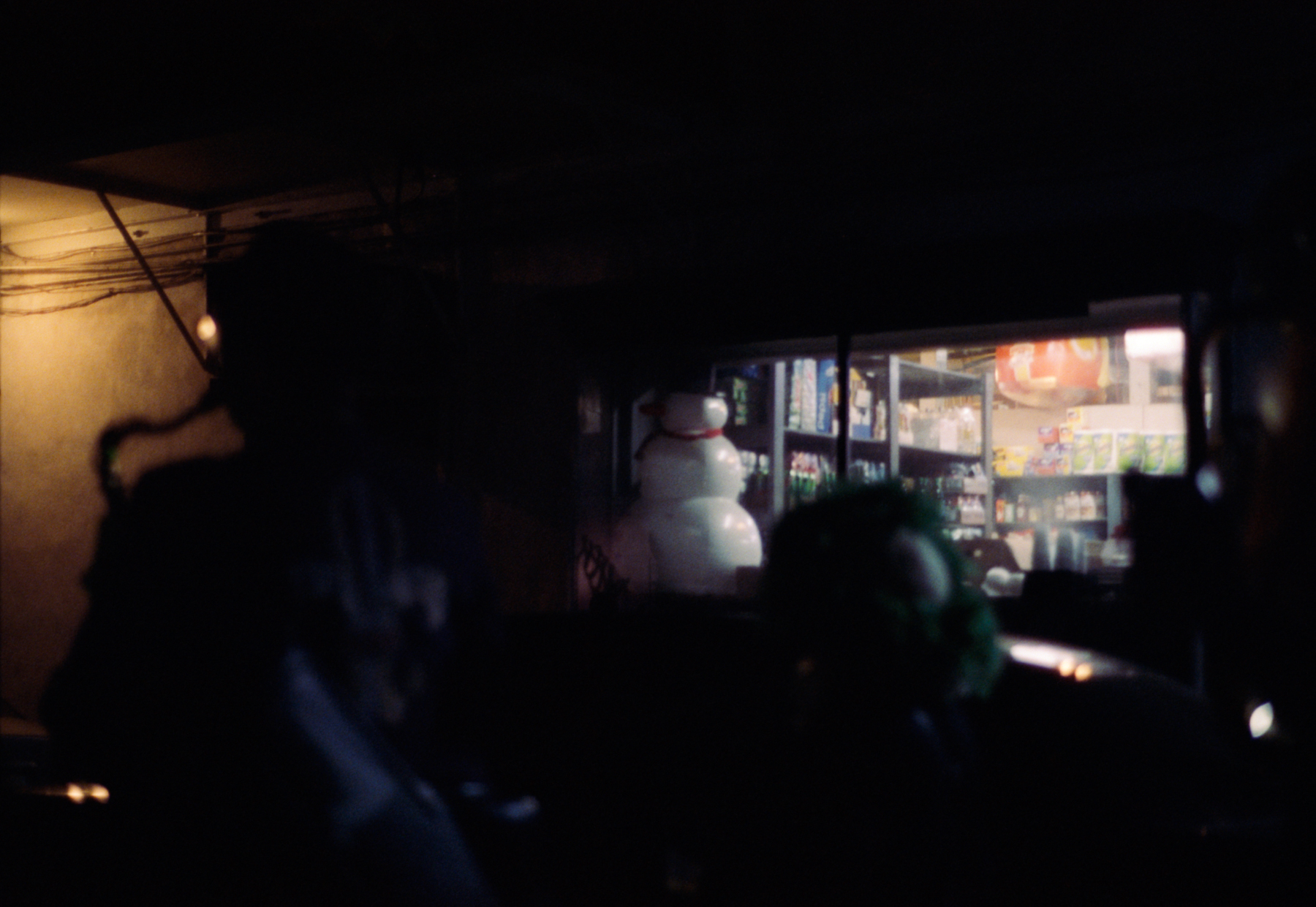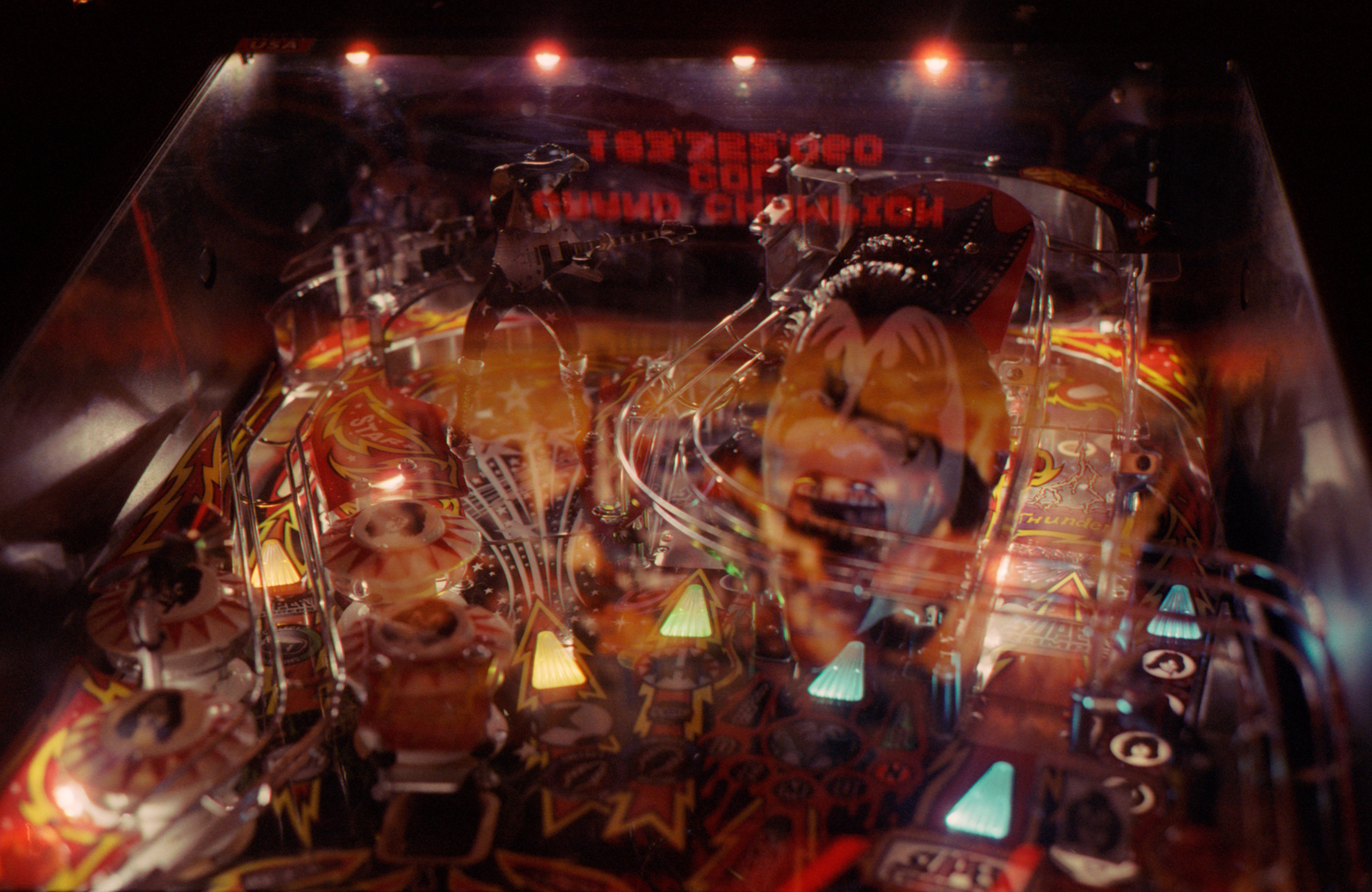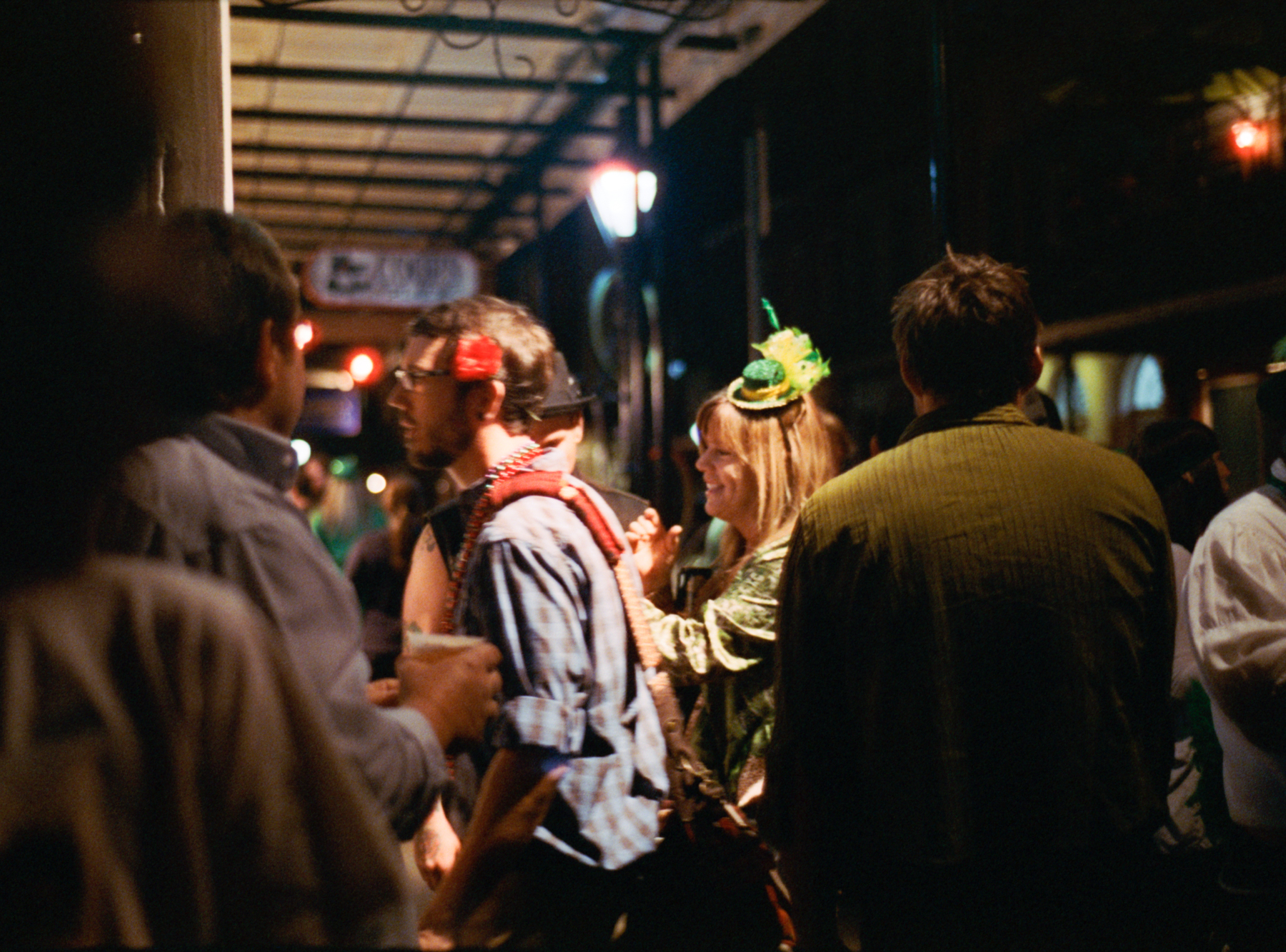I will admit it: when it comes to technology, I am a scoffer. I'm a film photographer who mainly uses cameras that don't even take a battery, and I would far rather be in the darkroom than at the computer, so I suppose this is to be expected. Scanning is not something I enjoy, but in today's world it's a necessary evil, and I can't hate on it too much considering that having a film scanner means I can properly see ALL of my negatives (not just the ones I have time to print). Also, being able to share my photographs online has made me so many new friends, and brought me a lot of fun opportunities. The day I received my Epson V500 was a good day!
However - I hate scanning color. HATE. The color balancing and spot cleaning makes me feel like going to sleep. Unfortunately, this is especially true for one of my very favorite films to use, the astonishing CineStill 800T. The film translates the colors of nighttime so well, I absolutely adore it; it has opened up a new world to me since I can now photograph in color in very low light situations. Scanning it, however, is another story. It comes out grainy, with a blue cast, and just the thought of working with the negatives is so overwhelming that most of my previous work with that film is still sitting on my computer as a raw scan that has been completely ignored.
Enter two things: a new scanner, and SilverFast.
Several weeks ago, right about the time I hit upon such a great deal for an Epson V800 that I couldn't pass it up, SilverFast was kind enough to offer me a full version of their software. The first time I opened it up, I solidly freaked out. Keep in mind that all I use for working with my negatives is Lightroom, and I'm pretty basic there. Up to now I have only used Epson Scan for my scanning, in the simplest way possible. The endless variety of buttons and controls that I saw in SilverFast were befuddling, so I closed and ignored the software entirely until I was able to have an online training session.
A long conference call, many notes, and a fresh batch of CineStill negatives later, my mind was blown. As with anything, once you learn it really isn't difficult to use at all. The reason it looks complicated is because it offers a variety of ways to go about things, which is terrific for people who really want to delve deep with their scanning work. The basic idea of working left to right, and top to bottom, is great, and the output is so fantastic that I will most likely never use Epson Scan again (sorry Epson folks).
What's so great about SilverFast? It does things for you. It does things I would have had to spend ages doing afterward in Lightroom (like spot cleaning dust - YES! It does that!). It gives me beautiful, high quality scans that are not grainy. I have noticed that some of my underexposed black and white negatives can be brought up an astonishing two stops in Lightroom without dissolving into a mess of grain, as would happen previously. I was always one to just bring my negatives in fairly raw and then work on them afterward, but SilverFast has changed my mind about that, especially with color negatives.
For example: after a pre-scan of 35mm film, the software finds the frames for me. Then I can either just batch scan, or open each one individually for fine tuning. With CineStill 800T, I choose one image and run the iSRD scan on it. What is that? Oh, just THE FUNCTION THAT COMPLETELY REMOVES DUST. Really. It disappears. The software does an infrared scan that just picks up the dust, and then it takes it away. This is nothing short of miraculous to me. The iSRD function only works on color negatives (the silver in black and white makes it impossible), but there is a function that can remove dust from black and white as well, which I will get to later.
Once I have run the iSRD scan on one negative, I used the job manager to tell it to apply that setting to all the frames. Then I am able to go back individually and select neutral points with the pipette, and this balances the color beautifully. Here you can see an old Epson Scan and Lightroom version, and below that, the SilverFast version, which required *nothing* afterward in Lightroom. For me, this is a significant improvement.
I have used so many rolls of CineStill 800T, and have always figured I just wasn't doing a very good job with it because I could not get the same beautiful results that I see from others online. Using SilverFast, I am stunned to discover that it was all down to my poor scanning. Here are some photographs from the roll that made the scales fall from my eyes.
And here are some photographs that I either had yet to scan or had left untouched because they seemed too difficult to manage.
This is a game changer for me in many ways. It opens the door to a lot of possibilities, including printing some of my color work, that I never would have considered before. Also, I need to restock my 800T supply. . . . . .hopefully with some medium format soon too!
Now, a couple of comments about scanning black and white negatives. It's difficult for me to quantify, but the output from SilverFast is better than what I was getting from Epson Scan. The tones are richer, and there is far less grain, as I mentioned above. Full disclosure, however: for me, the SRDX / spot removal function is not worth the time. I can see how it would be extremely useful if I had a badly scratched negative, since it allows you to create masks and really fine tune spot removal. For everyday, regular scanning, however, it seems to do nothing for me, so I usually don't use it. Not leaving the negatives hanging too long once dry, combined with careful use of a static brush, solves most of my black and white dust issues anyway.
In conclusion, I am a SilverFast convert. A lot of people dislike the software intensely, and I of course understand that what works for one will not work for all. However, if you get the chance, I think it's definitely worth a shot. The scanning process is a bit more time consuming, but the amount of time and frustration it saves me on the other end of the process is worth its weight in gold.

